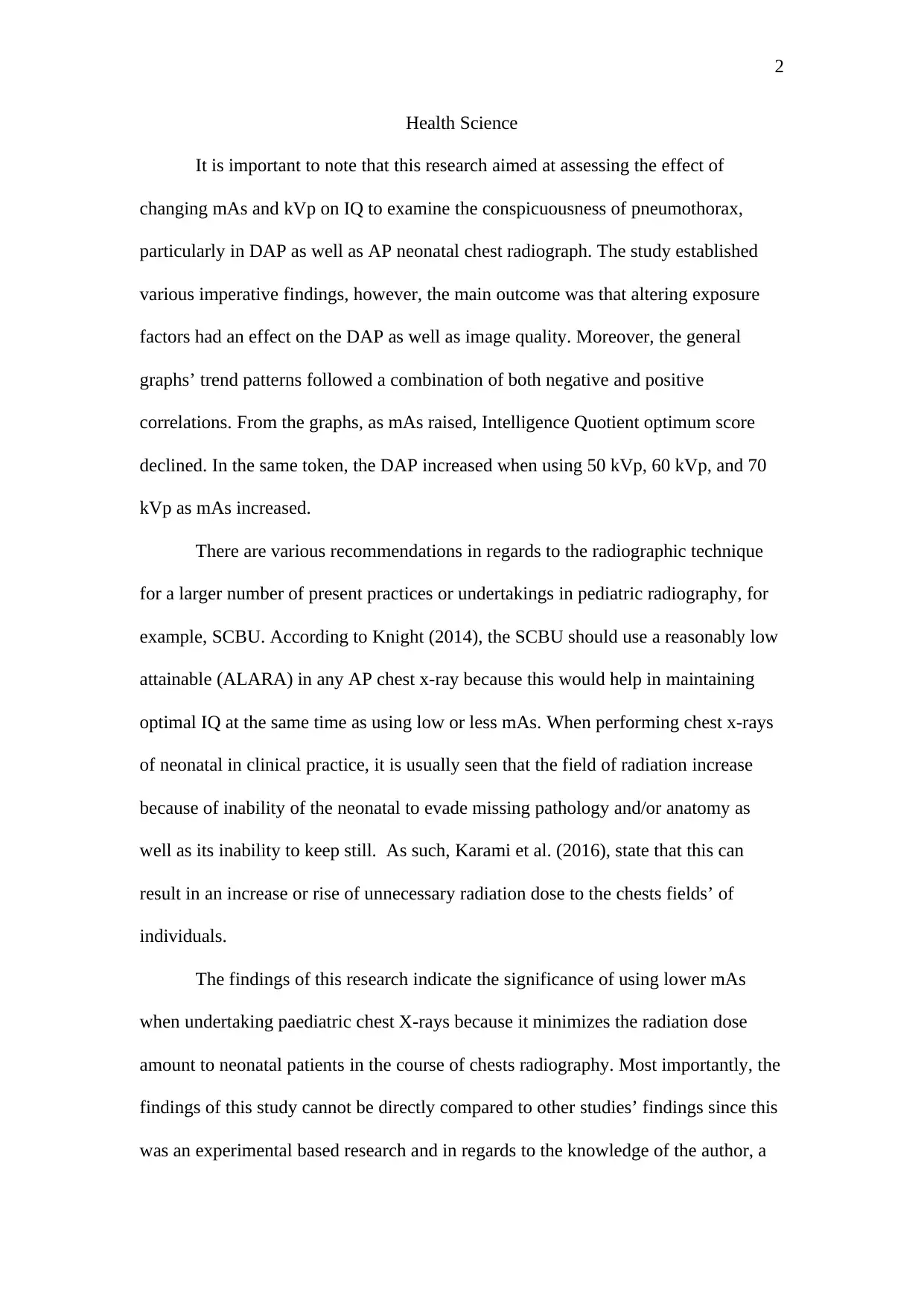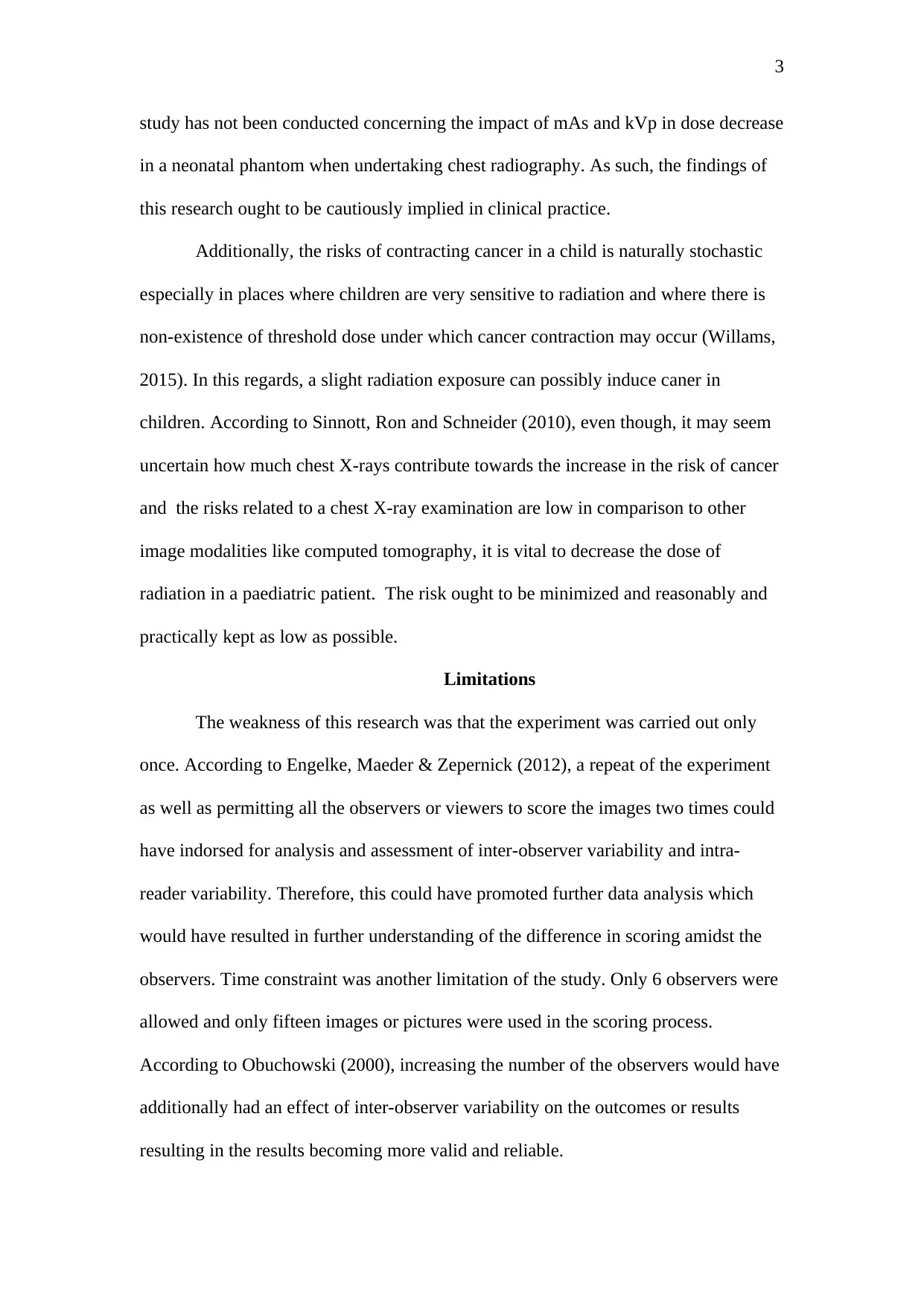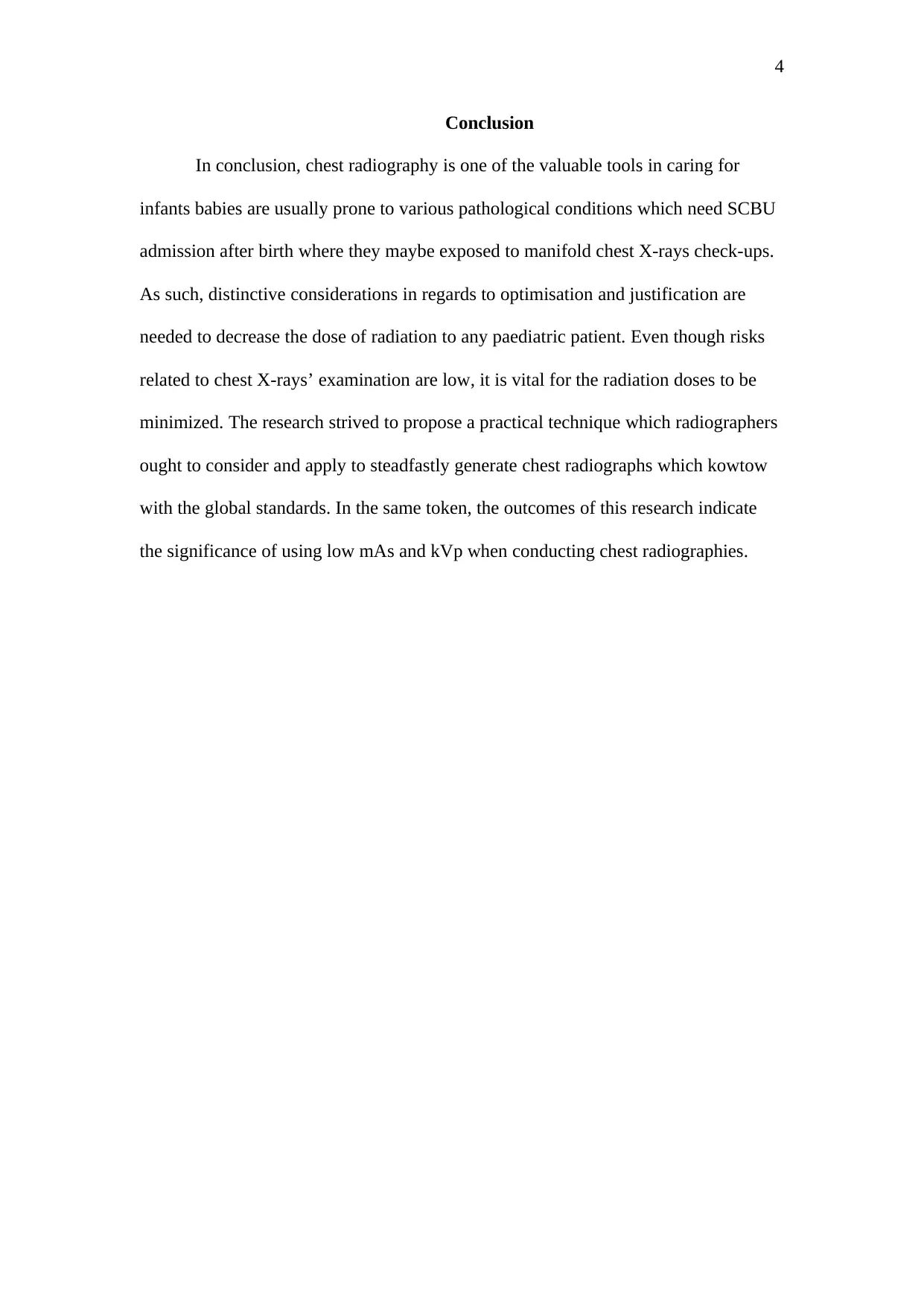Assessing the Effect of Changing mAs and kVp on IQ in Neonatal Chest Radiography
VerifiedAdded on 2023/06/11
|4
|820
|269
AI Summary
This research examines the effect of changing mAs and kVp on IQ in neonatal chest radiography and recommends using lower mAs to minimize radiation dose. The study found that altering exposure factors had an effect on the DAP as well as image quality. The research proposes a practical technique which radiographers ought to consider and apply to generate chest radiographs which kowtow with the global standards.
Contribute Materials
Your contribution can guide someone’s learning journey. Share your
documents today.
1 out of 4







![[object Object]](/_next/static/media/star-bottom.7253800d.svg)